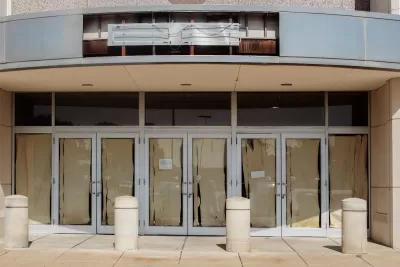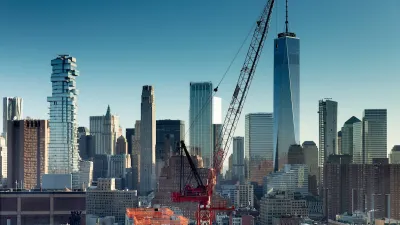Loosening restrictions on clean light manufacturing can revive dormant storefronts and revitalize communities.

Even before the pandemic’s impact on commerce, brick-and-mortar retail spaces were seeing lower demand. Rather than leave them as boarded-up vacant storefronts until new tenants move in, some cities are adjusting their zoning codes to make retail spaces more available to uses such as light manufacturing.
Writing in Governing, Ilana Preuss explains, “Small-scale manufacturers create products — from hardware to handbags to hot sauce — that typically are sold both in retail shops and online and are thus not solely dependent on foot traffic for revenue. That makes them well suited to neighborhoods and business districts seeking to revitalize from significant commercial-space vacancies.”
Recently, New York City became the first major city to loosen its zoning regulations on small-scale manufacturing in all commercial corridors, eliminating costly and time-consuming permitting processes.
“Today’s appeal and demand for small-scale manufacturing businesses is strengthened further by the fact that they often combine production facilities with a retail store and even entertainment space. That enables them to play a more enhanced role in the civic life of their communities.” For Preuss, including “small clean production businesses” in more neighborhoods can be a catalyst to economic development and community vitality.
FULL STORY: Empty Storefronts? Let Entrepreneurs Make Things There.

Alabama: Trump Terminates Settlements for Black Communities Harmed By Raw Sewage
Trump deemed the landmark civil rights agreement “illegal DEI and environmental justice policy.”

Planetizen Federal Action Tracker
A weekly monitor of how Trump’s orders and actions are impacting planners and planning in America.

The 120 Year Old Tiny Home Villages That Sheltered San Francisco’s Earthquake Refugees
More than a century ago, San Francisco mobilized to house thousands of residents displaced by the 1906 earthquake. Could their strategy offer a model for the present?

In Both Crashes and Crime, Public Transportation is Far Safer than Driving
Contrary to popular assumptions, public transportation has far lower crash and crime rates than automobile travel. For safer communities, improve and encourage transit travel.

Report: Zoning Reforms Should Complement Nashville’s Ambitious Transit Plan
Without reform, restrictive zoning codes will limit the impact of the city’s planned transit expansion and could exclude some of the residents who depend on transit the most.

Judge Orders Release of Frozen IRA, IIJA Funding
The decision is a victory for environmental groups who charged that freezing funds for critical infrastructure and disaster response programs caused “real and irreparable harm” to communities.
Urban Design for Planners 1: Software Tools
This six-course series explores essential urban design concepts using open source software and equips planners with the tools they need to participate fully in the urban design process.
Planning for Universal Design
Learn the tools for implementing Universal Design in planning regulations.
Clanton & Associates, Inc.
Jessamine County Fiscal Court
Institute for Housing and Urban Development Studies (IHS)
City of Grandview
Harvard GSD Executive Education
Toledo-Lucas County Plan Commissions
Salt Lake City
NYU Wagner Graduate School of Public Service





























